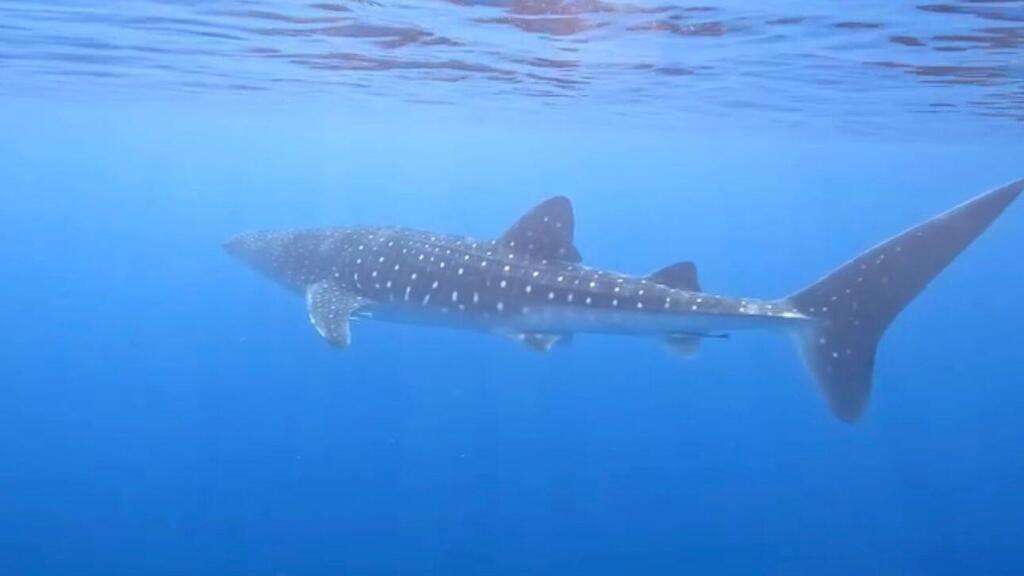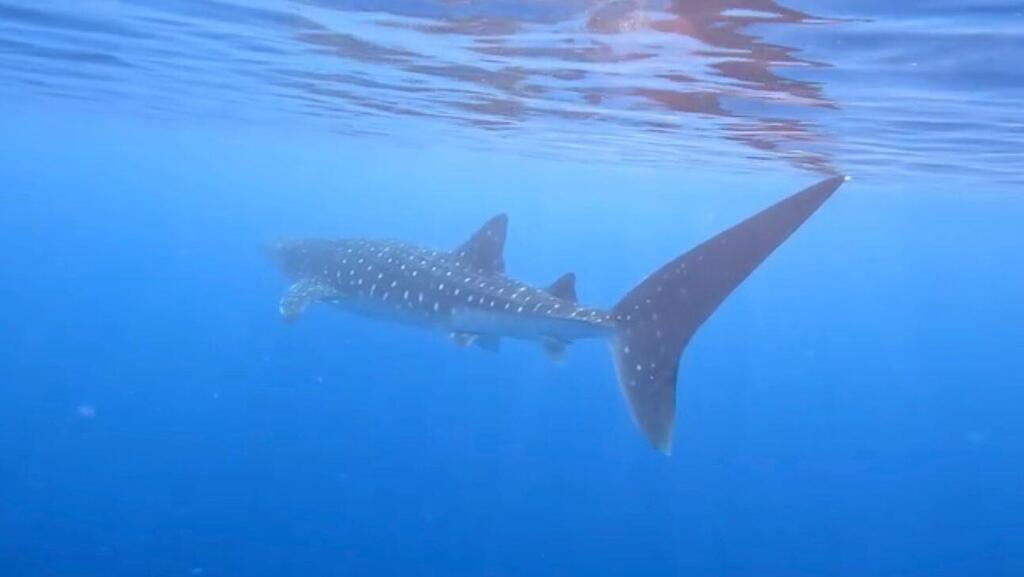Getting your Trinity Audio player ready...
Giant whale shark sighted off Eilat
(Video: Sagi David Kabra - Freedive Eilat)
Sagi David Kabra, a freediving instructor in Eilat, was busy teaching a course as part of his diving club’s activities when he had a surprising encounter with a 20-foot-long whale shark in the Gulf of Eilat’s Coral Beach Nature Reserve.
Kabra shared he suddenly spotted the whale shark during a dive about 100 yards from the shore. "It was a very exciting encounter for me," he said. "In the last five years, I’ve had many different encounters with it in the Gulf of Eilat, with the last one being about six months ago. I’ve been waiting a long time to see it again.”
“I watched it for about three and a half minutes. A whale shark comes close to the shore in search of food. In such an encounter, it’s recommended to allow it to move freely and not touch it. It’s also prohibited to harm it with any watercraft."
The Nature and Parks Authority added the whale shark is the largest fish in the world and isn’t considered dangerous to humans. It’s a protected species in Israel and is globally endangered.
The largest individual ever measured was over 40 feet long and weighed over 23.7 tons. Claims of larger specimens observed aren’t scientifically backed. Despite its size, the whale shark isn’t considered dangerous, and many divers often accompany it and even cling to it as it moves. The whale shark is frequently spotted in the Philippines, along the coast of Thailand, in the Maldives, western Australia, the Galapagos Islands and the Red Sea.
The whale shark is sometimes hunted as part of commercial or recreational fishing, often in areas where it seasonally aggregates and its population size is currently in decline.
The whale shark species was first identified in April 1828, after a 15-foot specimen was harpooned in Table Bay, South Africa. It was later described by zoologist Andrew Smith, a military doctor attached to British soldiers stationed in Cape Town.
He published a more detailed description of the same individual in 1849. The name "whale shark" derives from its physiology — the shark is as large as a whale and uses a feeding technique similar to that of a whale, which is filtering food from the water.






